
In an annual report that looks at national and state-level trends in higher education funding, revenue, and spending, Tennessee stands out as a student-focused leader in state financial aid, an indicator of the state’s efforts to increase postsecondary access and attainment over the last decade.
The recently released State Higher Education Finance (SHEF) report identifies financial trends that are particularly important given the pending impact of the pandemic on higher education finance. Here are the Tennessee findings from the report, produced by the State Higher Education Executive Officers Association (SHEEO).
Enrollment Trending Upward
Nationally, postsecondary full-time equivalent (FTE) enrollment* has declined every year since a peak in 2011. Tennessee, however, has had relatively steady FTE enrollment since 2015 and saw an increase in 2019 of nearly 1,000 students. While this trend is promising, it is unclear how the pandemic will affect future enrollment. The Great Recession resulted in several years of increased postsecondary enrollment, but current and incoming college students have recently expressed doubt and uncertainty about their families’ finances and future plans for higher education.
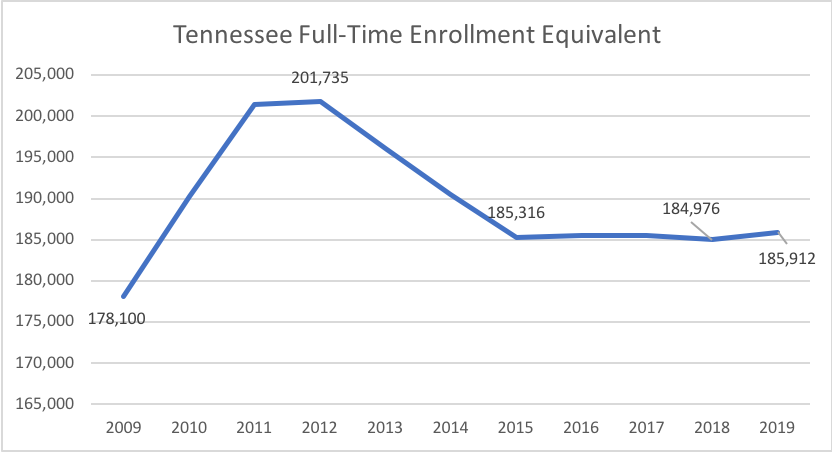
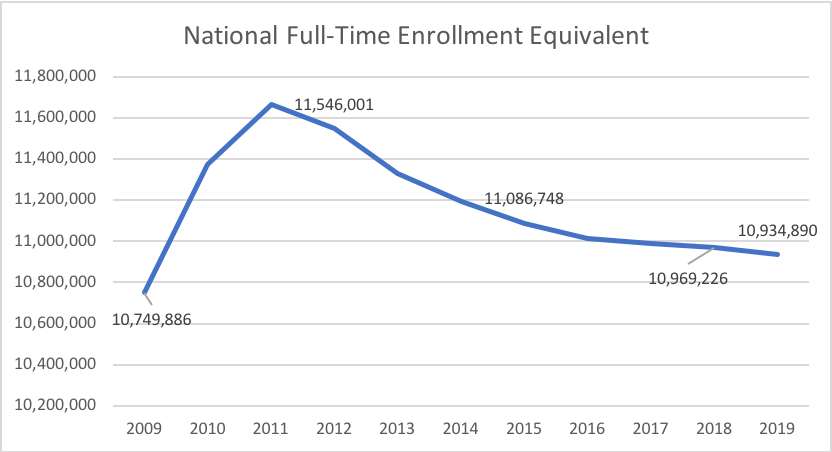
A Leader In Financial Aid
As the cost of attending college continues to rise across the country, Tennessee stands out as a national leader in state financial aid. Through initiatives such as Tennessee Promise and Tennessee Reconnect, the state has shown its commitment to reducing financial barriers to postsecondary attainment. These efforts are reflected in the report:
- Close to a quarter (24.4 percent) of Tennessee’s education appropriations are allocated toward public financial aid, meaning it goes directly toward decreasing the cost of tuition for students. This is the third highest percentage in the country, following Louisiana and South Carolina.
- Tennessee leads the country in financial aid per FTE: $2,271 compared to a national average of $808. Not only is this the highest amount in the country, but Tennessee is one of just three states that have increased state spending on financial aid by more than 10 percentage points — just over $81 million — in the last decade.
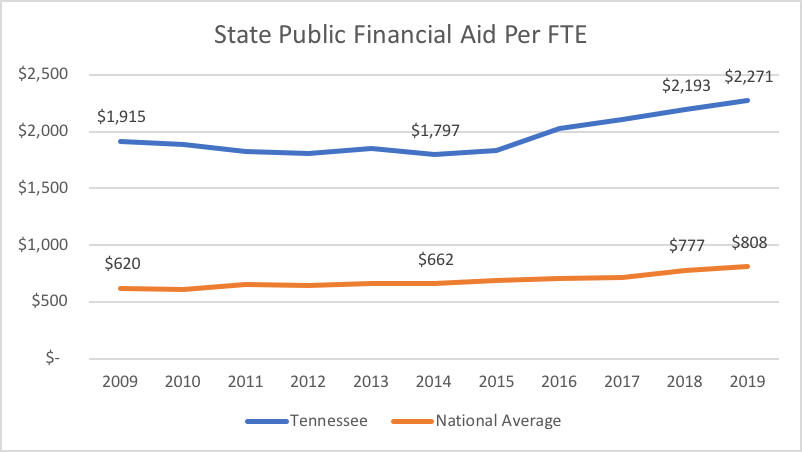
State public financial aid per FTE in Tennessee was consistently higher than the national average over the past decade and has increased every year since 2014.
- After factoring in state financial aid and other institutional discounts and waivers, the average full-time enrolled Tennessee student paid $7,127 for tuition in 2019, about $200 higher than the national average. Importantly, however, while the national average increased for five straight years beginning in 2014 — resulting in a 7.6 percent total increase — tuition expenses for Tennessee students have trended downward since 2016, returning to their 2014 value. Research links increases in tuition to decreased in-state and four-year enrollment, suggesting Tennessee’s more sustained (and recently decreasing) tuition rate supports student access to Tennessee institutions.
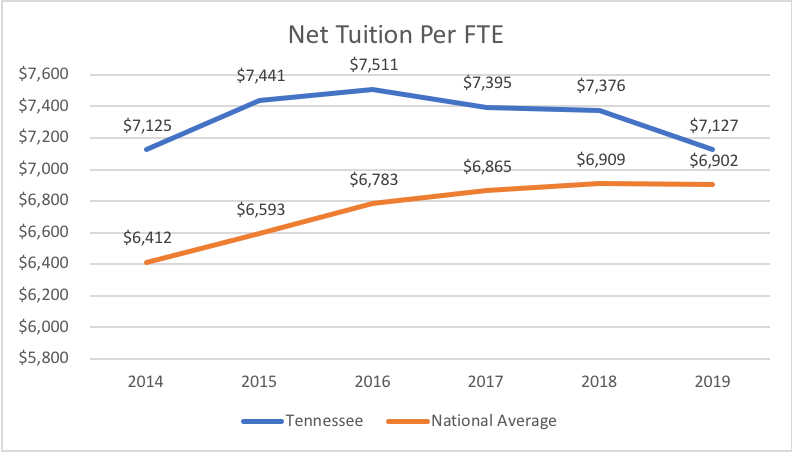
Continuing Support For Higher Education
Over the past 10 years, Tennessee’s postsecondary education appropriations per FTE have remained consistently above the national average. This is a key reason the state has been able to provide generous financial aid per FTE, as state financial aid is allocated directly from education appropriations.
While Tennessee’s state appropriations decreased in response to the Great Recession, state leaders have provided consistent increases in state spending on postsecondary student success over the past five years.
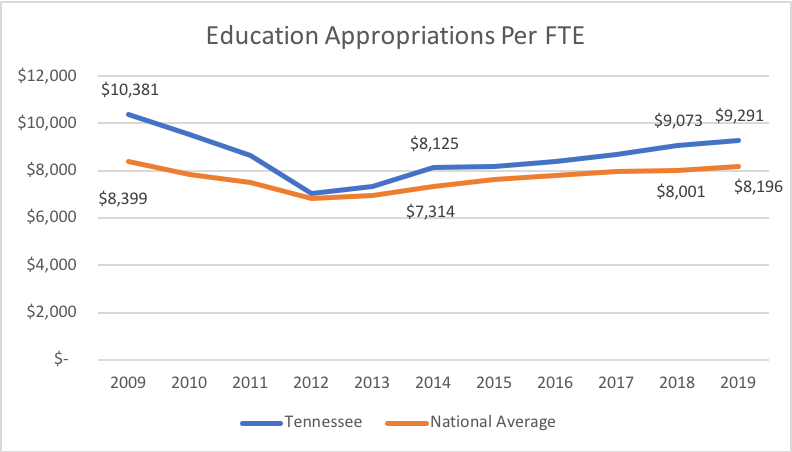
Tennessee has made a number of innovative, student-centered strides in postsecondary policy over the last decade. The SHEF report reflects this progress, highlighting Tennessee as a national leader in supporting students through state financial aid — a crucial aspect of reducing financial barriers and increasing postsecondary access and attainment. The report also provides insight on how the Great Recession impacted postsecondary finance in Tennessee, an important pattern to consider as the state navigates the financial impact of COVID-19 while continuing to promote students’ postsecondary and career success.
Claire Ruegg is a graduate fellow at SCORE.
